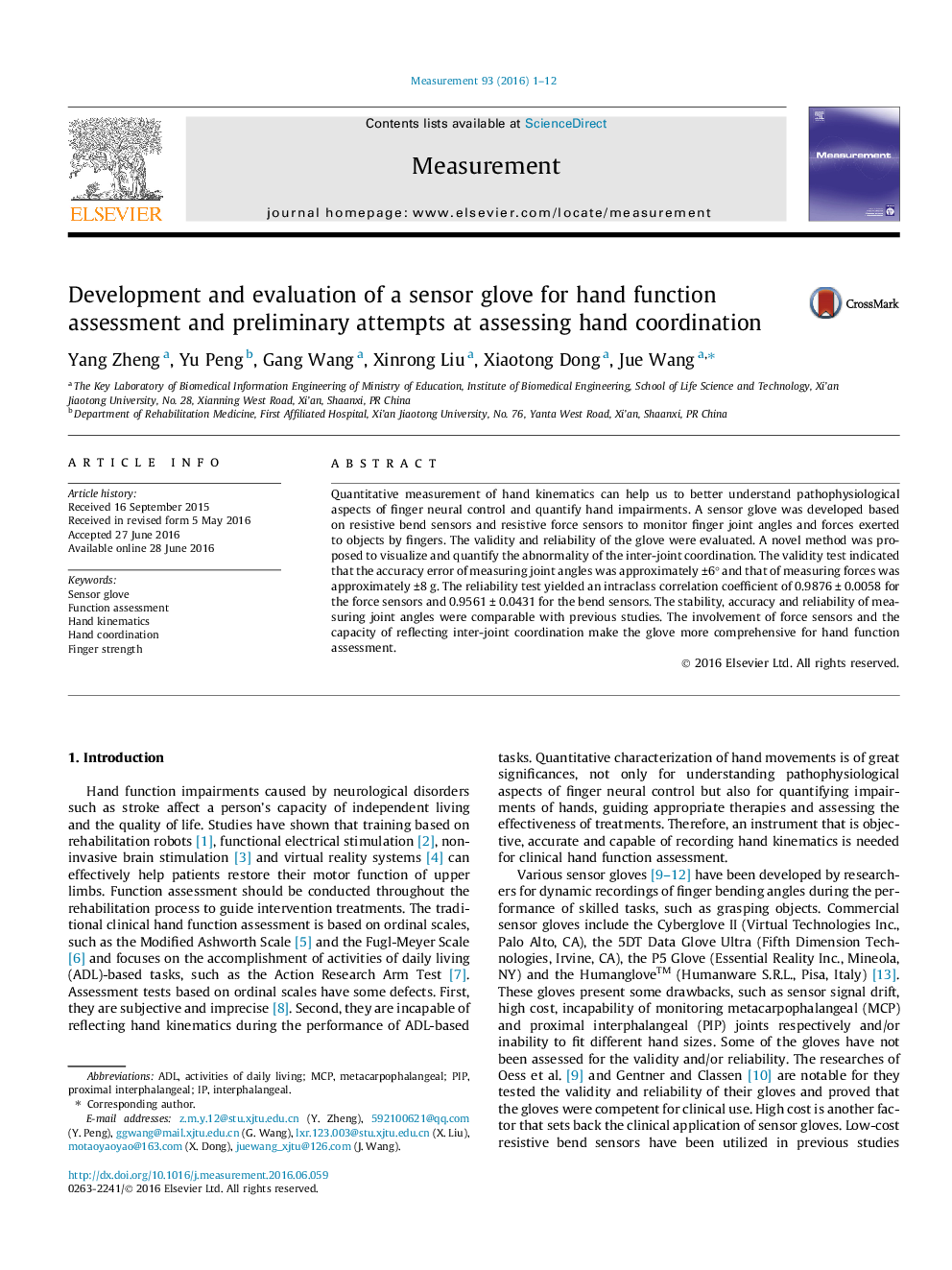| Article ID | Journal | Published Year | Pages | File Type |
|---|---|---|---|---|
| 7122378 | Measurement | 2016 | 12 Pages |
Abstract
Quantitative measurement of hand kinematics can help us to better understand pathophysiological aspects of finger neural control and quantify hand impairments. A sensor glove was developed based on resistive bend sensors and resistive force sensors to monitor finger joint angles and forces exerted to objects by fingers. The validity and reliability of the glove were evaluated. A novel method was proposed to visualize and quantify the abnormality of the inter-joint coordination. The validity test indicated that the accuracy error of measuring joint angles was approximately ±6° and that of measuring forces was approximately ±8 g. The reliability test yielded an intraclass correlation coefficient of 0.9876 ± 0.0058 for the force sensors and 0.9561 ± 0.0431 for the bend sensors. The stability, accuracy and reliability of measuring joint angles were comparable with previous studies. The involvement of force sensors and the capacity of reflecting inter-joint coordination make the glove more comprehensive for hand function assessment.
Keywords
Related Topics
Physical Sciences and Engineering
Engineering
Control and Systems Engineering
Authors
Yang Zheng, Yu Peng, Gang Wang, Xinrong Liu, Xiaotong Dong, Jue Wang,
